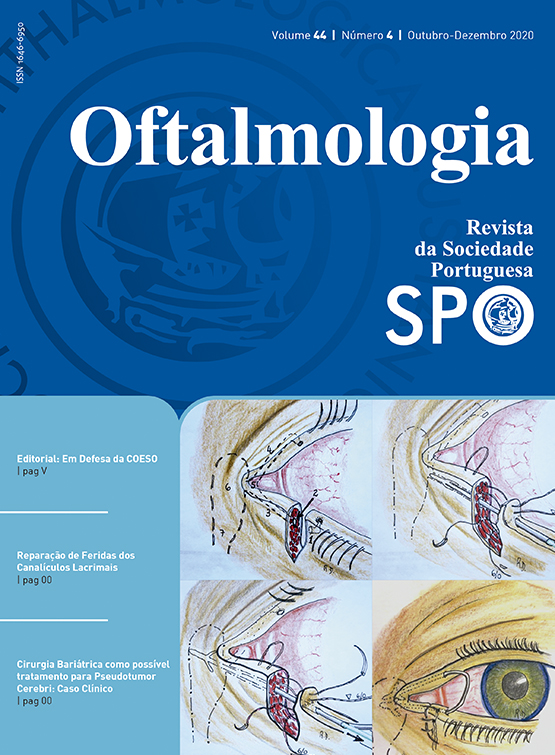Influence of intensive near-work on refractive, biometric and topographic changes in last year Portuguese medical students: one-year longitudinal study
DOI:
https://doi.org/10.48560/rspo.21269Abstract
Purpose: To analyze the refractive, biometric and topographic changes in last year Portuguese medical students exposed to high educational demands.
Methods: One-year longitudinal cohort study was performed. Data collected consisted in ocular refraction, axial length (AL), keratometry, corneal thickness, macular thickness and volume. Ophthalmological evaluations were performed 6 months before the students’ final exam, one month after the exam and 6 months later.
Results: Twenty-five medical students were included. The mean spherical equivalent was -1,57 ± 1,29 D at the 1st visit, -1,73 ± 1,44 D in the 2nd visit and -1,40 ± 1,39 D in the 3rd visit. There were no significant differences in the mean spherical equivalent between the 1st and 2nd visits (p=0,055) and between the 1st and 3rd visits (p=0,331).
In the 1st, 2nd and 3rd visits, the AL was 23,91 ± 0,99 mm; 24,01 ± 0,98 mm and 23,94 ±1,03 mm, respectively. The AL increased significantly between the 1st and 2nd visits (p<0,001), but the variation between the 1st and 3rd visits was not significant (p=0,414). Corneal thickness and posterior surface corneal keratometry in the steepest axis decreased significantly at the 2nd visit (p<0,05). Macular thickness and volume variation during the follow-up were not statistically significant (p>0,05).
Conclusions: This study failed to show statistically significant changes in refraction towards myopia in Portuguese medical students after a long period of near-work; nonetheless the small sample size may have contributed to the lack of statistical significance. The refractive values returned to baseline after 6 months.
Downloads
Downloads
Published
How to Cite
Issue
Section
License
CC BY
Do not forget to download the Authorship responsibility statement/Authorization for Publication and Conflict of Interest.
The article can only be submitted with these two documents.
To obtain the Authorship responsibility statement/Authorization for Publication file, click here.
To obtain the Conflict of Interest file (ICMJE template), click here







